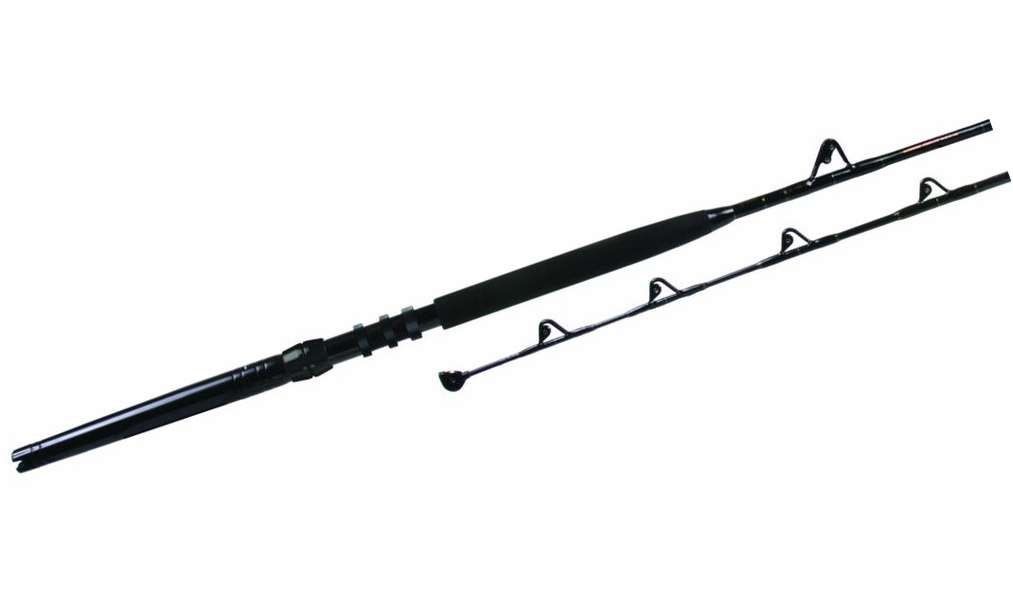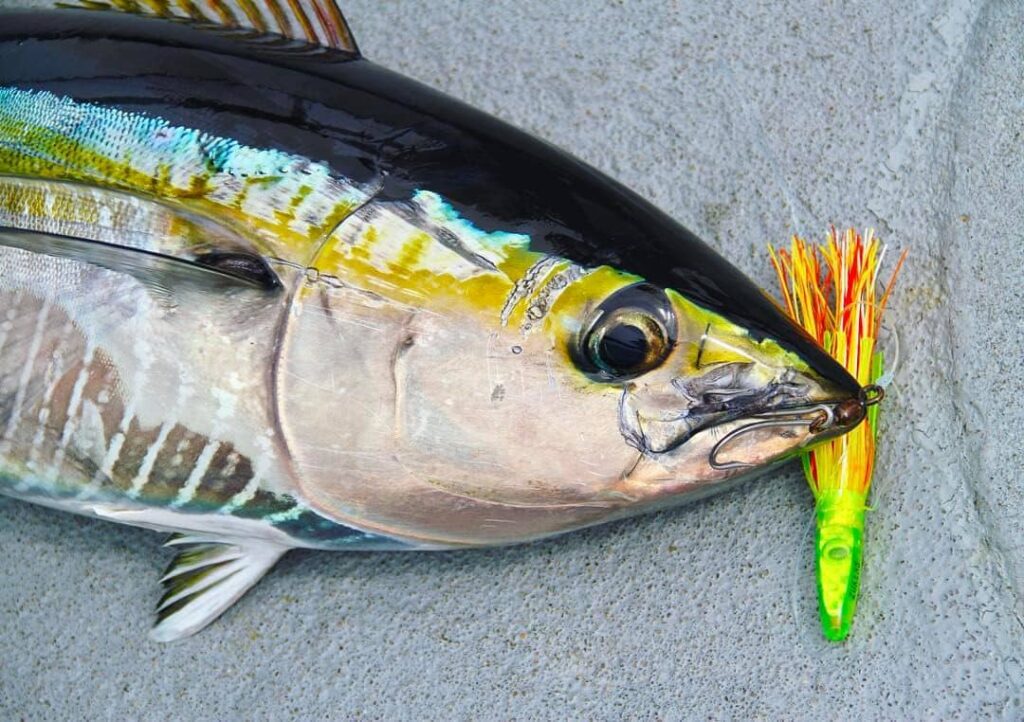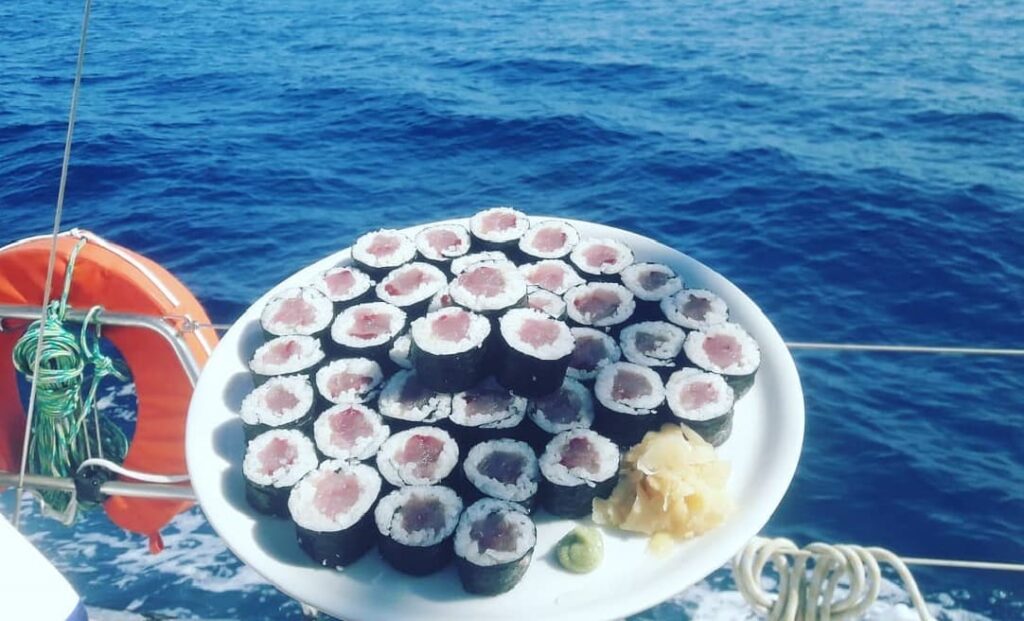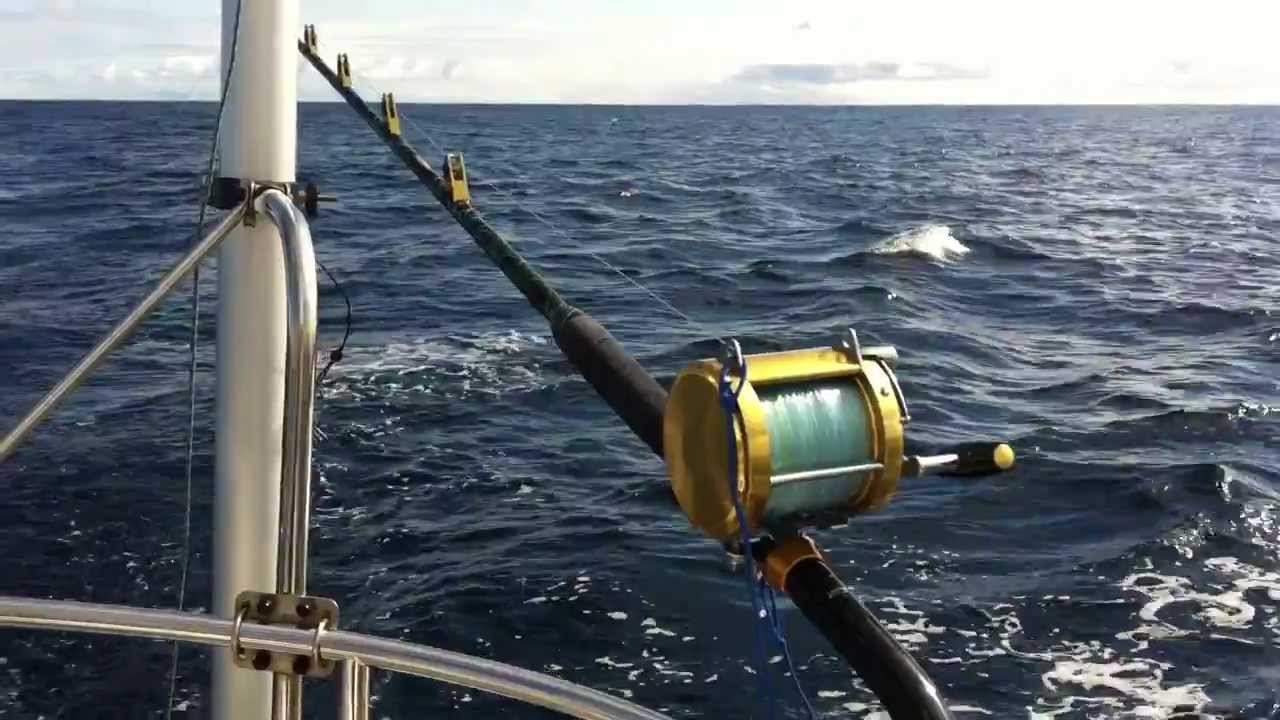Trolling From A Sailboat: How To
Trolling is the fishing technique in which at least one fishing line is drawn through the water. This can be behind moving a sailboat or any other boat for that matter. It is utilized in catching pelagic fish like mackerel, mahi-mahi, tuna, swordfish, and other big game fish. Speed, location, weather conditions, and of course, equipment will have a significant impact on the kind of fish you are going to catch.
Sometimes, people mistake trolling with trawling, which is a different technique of fishing in which the net is drawn through the water rather than fishing lines. This requires a special fishing boat and cannot be done with a sailboat.
Out in open water, chances of getting larger fish are high. In the open sea, trolling speeds must be higher. Somewhere between five and seven knots. Be prepared if you want to go to the islands. You will definitely require heavy gear for trolling, especially when sailing. At least thirty-pound test line and if you are going for bigger game fish you have to have much more than that.
When sailing, you can not always halt the boat. If you want to hook large fish, you will definitely require gear that is heavy enough to actually pull fish while you’re trying to slow the sailboat down. If you’re motoring, it would not be difficult since you can stop whenever you want, but that is not the case on long trips or passages so when sailing is the only option. You could troll with a fifteen-pound test line is the latter was the case.
When it is completely wound in then, gradually let bare line pull out again during still sailing, to make sure you do not get twisted up areas of line come overboard. If possible, let out for a bit more line than the point when it became twisted. While having nothing on end of the line and water moving beside the line, twists will eliminate themselves in no time. Now, let’s start with the basics and the fun part:
Rod or Hand-line?
Personally, I will pick a rod over a hand-line every day for a couple of reasons. First of all, I have experienced more bites and have caught more and bigger fish with a rod and reel. I am not sure why though.
Maybe it’s because the rod is swinging up and down more when sailing and that gives the lures more action. One more season to love the rod and reel combo is the noise it makes when you hook a fish. When a fish is hooked, and the reel starts screaming, you know it’s game on!
This trolling fishing rod from Amazon is one of the best for its price.

Line
A strong fishing line is essential when trolling (duh!). Especially when sailing since you can’t just stop your boat on a second’s notice. Personally, I use monofilament line on the top and braided line on the bottom of the spool. That is because a big fish will take a lot of line from your spool and you will have to let the fish run before you start reeling it in. Braid line is compact and spools really well while mono is flexible, so the fish can’t easily break away. With a set up like this, you will never run out of line; especially if you opt for a large boat reel.
This set up also makes it easy and less expensive to replace the top mono line that degrades faster because of the heavier exposure to water and sunlight. Make sure to rinse your spool after fishing every time since that will help them last longer.
Do get a good quality ball bearing swivel for trolling. They are more costly than regular swivels, but they work exceptionally even under heavy load. When trolling, the bait or lure is continuously pulling on the swivel, so the regular swivel may not turn. This means that your lure will be spinning and if you are lucky, then it will just put hundreds of twists instead of thousands in the line, which would be a nightmare for you.
You may not notice it at first during trolling, however the second you try to reel your line you will understand what I am talking about. First of all, check if slack is positioned on the line because it will turn up severely. If your links twist, you need to get the twists out by just carefully reeling in the turned line, take necessary precautions to avoid the line getting any further slack during reel.
You should at least go for a 30-pound test line when trolling from a sailboat. Personally, I always go for something like an 80-pound test line because I always try being optimistic.
After the Fish Is Hooked
After the fish is on your hook, you should try to slow down the boat. This is not a problem when you are running the engine but if you are on sail things become a little trickier. First of all, you should furl your genoa. Then, if the fish is big, you should drop the main sail as well. This will make reeling the fish easier. This is really a two-person job, but it can be done singlehanded as well.
When you pull the fish onboard
First of all, you need a gaff to “stab” the fish and bring it onboard. You can bet something more expensive but a cheap gaff from Amazon will do its job just fine. A “gaff” is a pole with a large hook on the one end that is especially useful to bring larger fish on the boat. Alternatively, for smaller fish, you can use a hand net, but I personally prefer the gaff. That is because when you are about to bring this fish onboard, the hook may fall off or the line can break when pulling the fish on the boat. Keep in mind that the fish will try to swim underneath the boat, and that is a problem because the kneel could cut the line. If that happens, be prepared to move yourself in either direction to avoid this.
Before pulling the fish onboard, make sure to water the deck. This will make it much easier to clean up. That is especially true if you have a teak deck and you are reeling a tuna in. Tuna will bleed heavily on your boat, and if the teak is dry will absorb the blood, making it difficult to clean.
After The Fish Is Onboard
First of all, be a sportsman and don’t let the fish suffer. There are a couple of ways to do this. The first is to take a cutting board, place it beneath the fish, and make a deep cut/stab on the top of the spine or into the brain. The fish will bleed a lot, especially if it’s a tuna or other large game fish. A good idea is to have a bucket and place its head until it bleeds out to protect your deck, especially if it’s teak. Another option is to pour alcohol straight on the gills, that will kill it fast as well.
Now, you can fillet the fish and depending on the size and how long it will take you to consume all of it you can place the fillets on smaller bags and place it your freezer or cooler.
You can read my article about grilling or cooking fish on a sailboat, but if you like sushi you can eat it raw as well. To be honest, I do enjoy my tuna raw, especially when it is that fresh with some rice.
>>Also Read: How To Cook On a Sailboat
Trolling Lures
It is optimal to have many trolling lines behind your boat with different types and sizes to target different species and different fish sizes. You can buy your lures from your local angling shop or straight from Amazon. A good tip is to buy a variety pack so you can try a wide variety of lures.

Other Essentials
Fishing Rod Holder: Most sailboats don’t have fishing rod holders built-in but don’t worry, they are pretty cheap and very easy to install. If you do not want to drill holes in your boat then these mounts from Amazon are your best option.
Trolling Dodgers and Flashers: This is a flat-like object that attaches to your fishing line and serves two objectives. One, it shines into the water, and that attracts fish and the other, makes a noise similar to other fish swimming; that attracts other fish as well.
Trolling Divers: Some fish don’t bite very close to the surface, and if you are hunting for those species you will need a trolling diver. This takes the lure down to the strike zone and multiples the chances of you bagging your dream fish.
Reels: Get a large boat reel that you can spool a lot of line into. I always prefer reels with a line counter, which means you are always aware of how much line you got behind your boat. Go with brands like Penn, Shimano (High-end Options), Okuma (Middle and VFM Option), KastKing, Sougayilang(Value Options).
Fishing Rod Belt: This is especially useful when you are trying to reel larger fish. Because of the functionality of the belt, you will be able to use your own body’s weight to pull on the fish. A cheap belt like this one will make all the difference in the world when reeling a fish in.

Now, let’s take a look at the more technical side of things:
Speed
The cruising speed of a sailboat is actually ideal for most species targeted when trolling. Some others require higher speeds but what can you do? (Nothing)
While trolling most people have enough information to calculate the speed which is suitable for fish they are targeting, rarely some people know to take environmental factors into account, which causes drift.
Drift is very important, particularly where you will have to deal with major currents because it alternates speed of lures as they travel through water. If basic navigation is known to you, then you have already a basic idea about the difference between water and overground speed. In trolling, you will need to take into account the speed through water because fish are apprehensive with this speed, and it is the speed that directs the action of the bait or lure.
For many people, while trolling, this means that using paddlewheel speedo rather than the Global Positioning System to establish their speed while they start trolling. These speedometers are infamously unreliable. A tiny thing like kelp or a small twig of seaweed may toss them off, even the finest paddlewheels require continuous calibration.
How will you be able to discover the trolling speed that is needed?
The answer to this question is hidden in your baits. While trolling some people get the speed to the point they think it is right, then they grab one of the lures and observe it “swim” through water? When it seems to be actually swimming, then you have found the accurate speed.
If someone changes course, then the tide also changes simultaneously, you enter a part with a different current, the wind changes significantly, and because of that, you will be going in the incorrect speed again. This is not a one-time set and then forget the speed proposition. You will require to continuously pay attention, even when you do not believe that anything has recently changed, recheck action of the baits at least every hour or by holding a lure next to the boat and keep observing it.
There is one extra thing you will require to be familiar with the speed: when your outcome is uninspiring, change it. Many people have put along, just waiting for the lure to be picked up or tide to face variation, when a small change in speed may make all the change in the world. So if the fishing is not fast, try to crank the speed a little bit up. Or try slowing them a little down. A slight modification in speed may work, and you can begin catching.
Lure Depth
One more variable many people forget while trolling is to check the depth of the lures. They may try to let out more line than they have to when they see a fish down in-depth on the fish finder, or they pull lines up a bit when fish start to seem to be in shallow waters. But this makes about as far sense as aiming a gun in the same direction of a target, pulling the trigger, then somehow supposing to hit bull’s eye mysteriously.
Unluckily, a list of features affecting depth where lures should swim is lengthy and varied: lure, line diameter, current, weight, lure size and shape, and many more.
Well, there is a common thumb rule you may utilize to get a feel for wherever those baits are swimming. It is also known as “the Rule of Fives”. While trolling at five miles per hour with five ounces in weight and fifty feet line out, the bait will be approximately five feet below the surface. Of course, you will rarely be going precisely five miles per hour, using exactly five ounces, and letting out exactly fifty feet line. This is something that depends on the resign of the lure as well and this rule applies to simple lures that are not designed to go up or down on the water.
However, by using “the Rule of Fives”, you can perform some basic math to approximate the depth of the lures. If all these baits are precisely at the same depth, then you have just dishonored one of the “cardinal rules of trolling” i.e., always set some lines at different depths. It will not only help you catch fish while they are dispersed throughout the water column, but it will definitely help you hook larger fish.
Trolling From A Sailboat – Conclusion
It doesn’t matter where you want to fish and what you want to fish for, there are high chances that you will have to use trolling techniques. The main question is, how effective are these techniques? Well, trolling while sailing may seem straightforward, you just have to drag baits or lures behind your sailboat. But, you also have to make these lures look alive, and many more countless details that isolate the “pros” from the amateurs. I hope that I was able to help you with this article enough to for you to start with trolling and start bagging some big fish.
